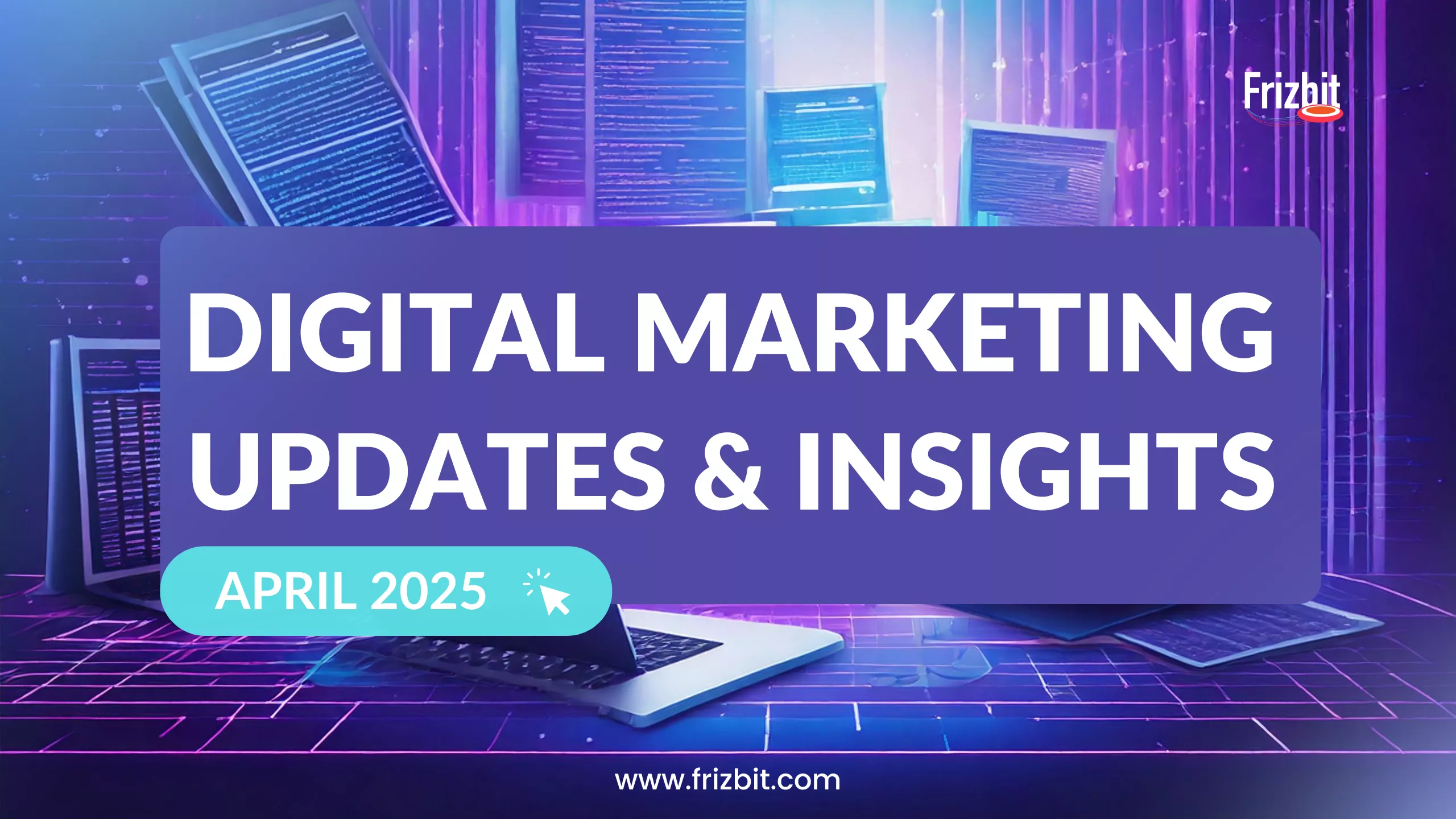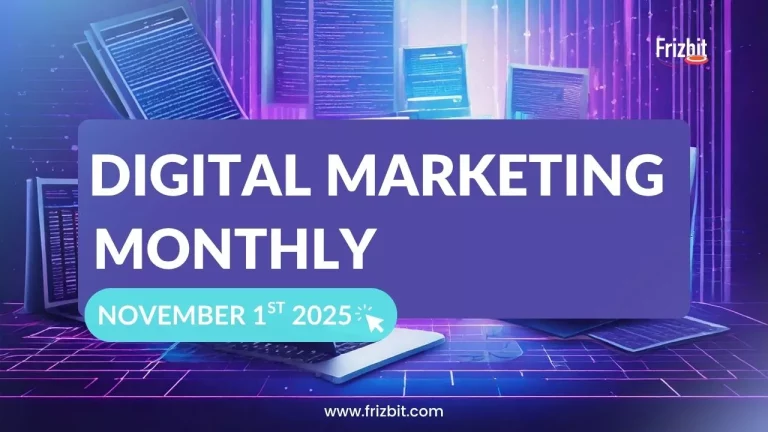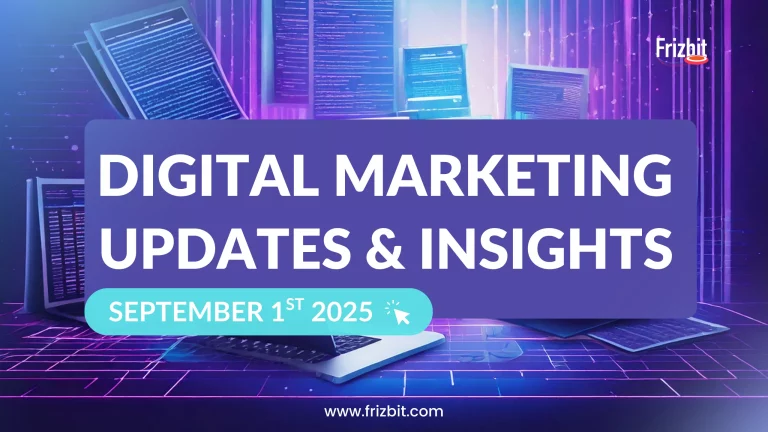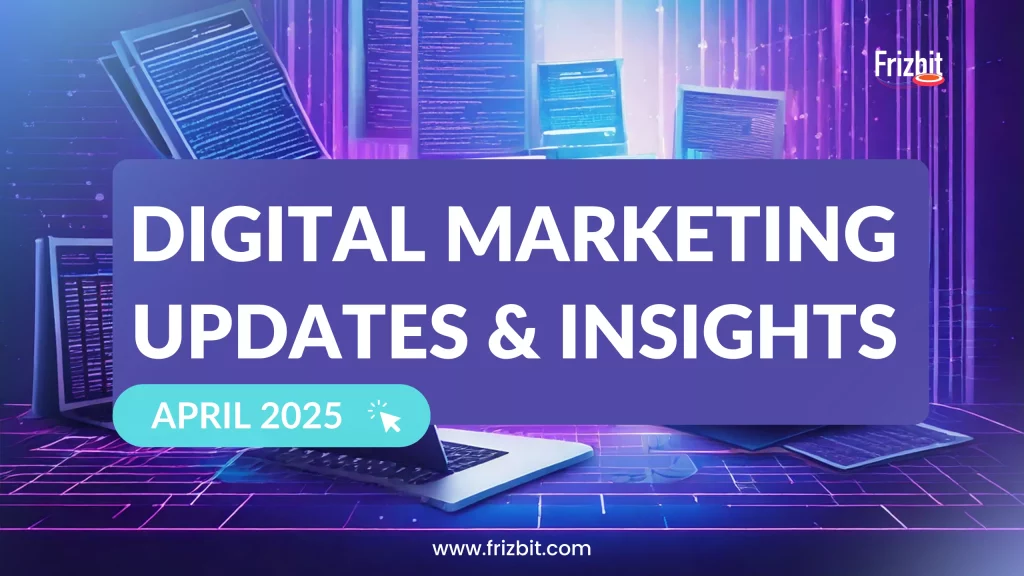
Welcome to our March digital marketing updates roundup! 💌🌸
From Google’s AI Overviews to Grok jumping into Telegram, April has been all about smarter search, deeper integration, and AI-powered workflows taking over everyday marketing tasks.
Remember when we talked about AI shaping the future of search? That moment is no longer in the future — it’s happening now. With Google’s new AI Mode and Gemini 2.0 powering more answers directly on the SERP, marketers need to think differently about visibility, click-through rates, and what it means to be “searchable.”
And it doesn’t stop there:
Quick read — here’s what we’re unpacking this month:
Search Marketing Updates: AI Overviews and AI Mode are changing how users interact with search. Plus, Google’s March Core Update brought major shifts in rankings.
Martech Updates: ChatGPT gets sharper for workflows, coding, and clarity — and Canva x HubSpot launch a smart integration for faster content creation.
Social Media Updates: Discover the best times to post in 2025 and explore how X’s Grok is expanding its AI assistant beyond the platform.
About Frizbit: Our Barcelona team attended MWC25 and shared reflections on how AI and personalisation are shaping the future of digital experience.
☕ Ready to make sense of it all?
Let’s dive into this month’s digital marketing updates
Search marketing updates
1. Google expands AI Overviews and launches AI Mode: is this the future of Search?
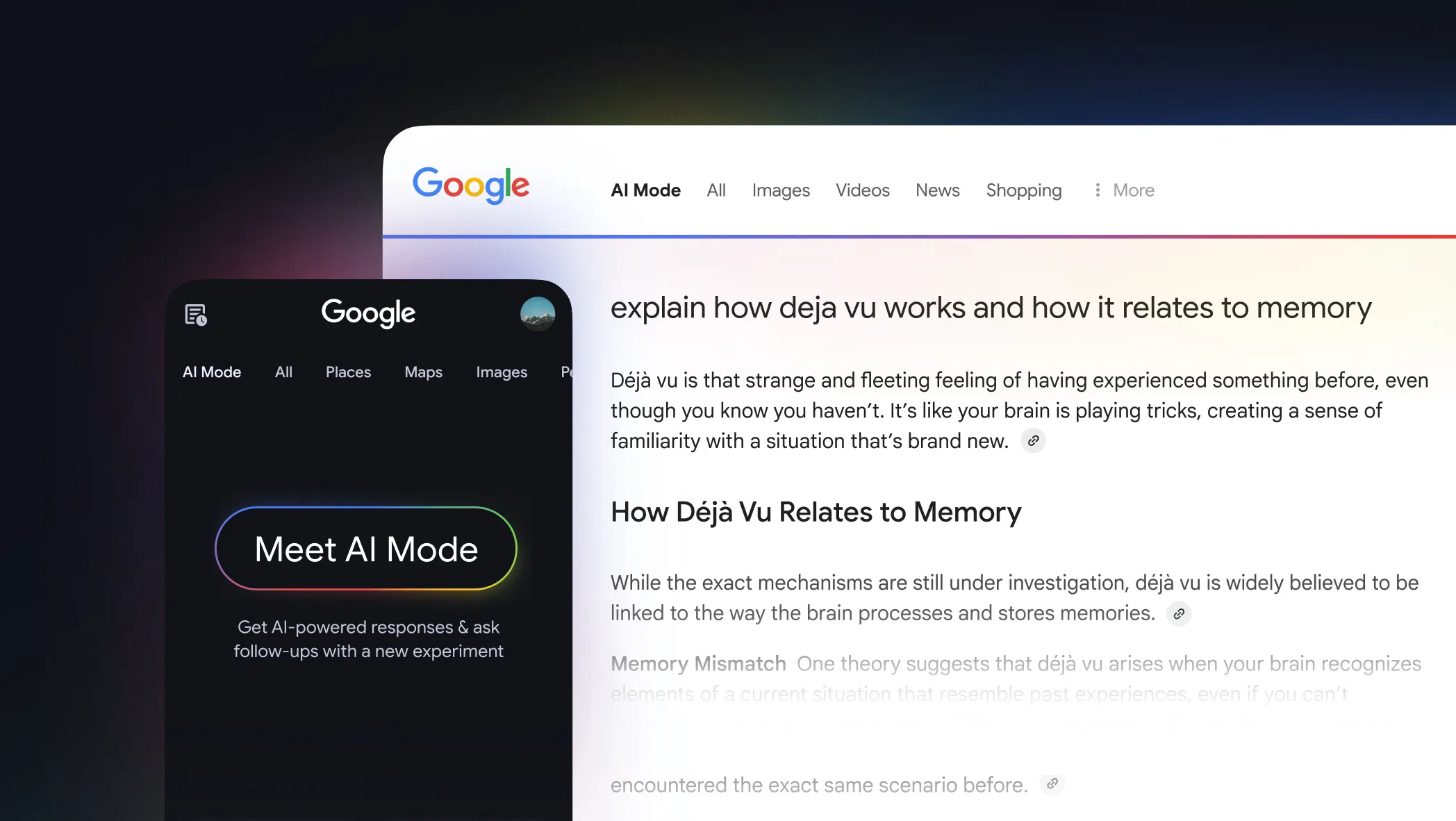
Key highlights:
- AI Overviews now powered by Gemini 2.0, offering better, faster responses
- AI Mode enters testing phase — a new way to search with deeper reasoning
- Users no longer need to sign in to see AI Overviews, now available to teens too
- Expect higher impressions, lower clicks on classic results — a new SERP reality
📌 Have you noticed a drop in CTR while impressions keep rising? You might be seeing the effect of AI Overviews in action.
A new way to search: enter AI Mode
Google’s new experimental AI Mode is now being tested in Labs. It’s designed for users who want richer, more exploratory answers to complex, multi-part questions. Using a custom version of Gemini 2.0, it leverages a multi-step reasoning engine that breaks down your query, pulls from various sources, and builds a highly contextual response — all within Search.
This isn’t a chatbot overlay. It’s Search evolving into something new.
You can now ask things like:
🧠 “What’s the difference in sleep tracking between a smart ring, smartwatch and tracking mat?”
💍 “How to plan an engagement photoshoot in Barcelona with local weather and vendor availability?”
…and receive a structured, AI-generated response that combines reasoning, recommendations, and follow-up links.
What’s really happening:
- Google is moving beyond keywords into conversational, task-based search
- The SERP is becoming an answer layer, not just a gateway to websites
- The balance between search visibility and AI citations is shifting
- Gemini 2.0 is positioned to power multimodal, exploratory interactions
🚀 Practical tips for marketers:
- Monitor Search Console for pages with high impressions but falling clicks
- Optimise content for AI summaries, not just rankings — include structured data, concise answers, and question-led headers
- Target complex search intent in deepth — topics a point of view are more likely to surface in AI Overviews and Mode
- Focus on building authority and value content — Gemini prefers clarity and trustworthiness
2. Google completes March 2025 Core Update: are forums losing their ranking power?

Key highlights:
- Google’s March 2025 Core Update finished on 27 March
- It caused the biggest ranking changes in over a year
- Forum content dropped, except for Reddit
- Programmatic content faced strong penalties
- Impact seen across retail, government and content-heavy sites
📌 Now that the March Core Update has finished, it’s a good time to review your site’s performance. If you noticed any changes in traffic or rankings, this update could be the reason.
Google started its March 2025 Core Update on 13 March and confirmed its completion on 27 March. According to tools like Local SEO Guide and SISTRIX, this has been one of the most volatile updates in the last 12 months, affecting thousands of websites across different industries.
This update didn’t target just one sector — it hit many types of websites, including retailers, government pages, and forums.
Forum content: losing visibility, except for Reddit
One of the clearest trends: forum websites are dropping in the rankings. Platforms like DIYChatroom, GarageJournal and proboards.com lost visibility after gaining ground in recent years.
This shift may be connected to Google’s efforts to reduce low-value or outdated forum content. Interestingly, Reddit remains strong, possibly because of its integration in Google’s “Discussions & Forums” feature.
SEO expert Lily Ray commented:
“The SEO glory days of ‘just be a forum and you’ll rank’ might be coming to an end.”
Too much SEO, not enough value? Google’s not a fan
Websites that use mass-produced, automated content — often created just for SEO — also saw visibility drops. For example, Bluettipower.com, a site with thousands of programmatic pages, was one of the biggest losers.
This shows that Google is getting better at identifying content created for algorithms, not for users. If your site includes this type of content, it’s time to clean it up.
🚀 What marketers should do next:
- Check your rankings by page, not just by domain
- Review your site for automated or low-quality content
- If you use forums or have user-generated content, focus on structure, clear intent, and user value
- Improve content based on real search intent, not just keywords
- Keep an eye on Search Console for any unusual drops
Our take:
Google is becoming more strict about what deserves to rank. It’s not enough to have lots of content — it needs to be useful, relevant, and built for users first. Even sites with strong authority or domain history were hit if their content didn’t meet these expectations.
This update is a reminder that SEO is now about quality, not shortcuts.
Martech updates
1. ChatGPT’s March updates: clearer, smarter, and more helpful for marketers
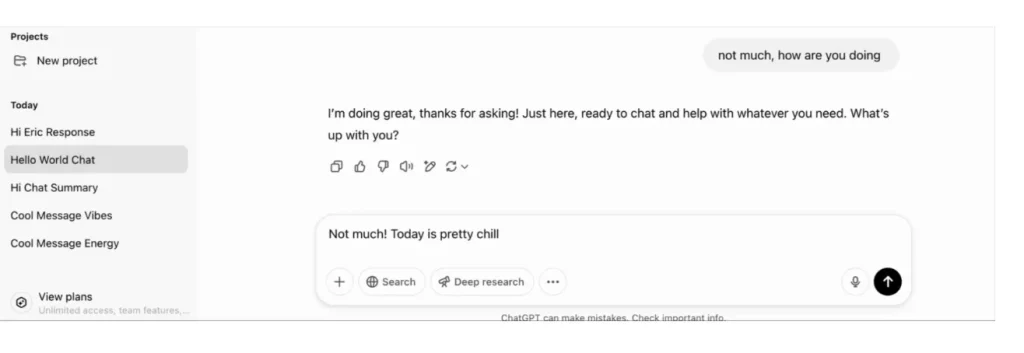
Key highlights:
- Improved instruction-following and content formatting
- Smarter problem-solving for coding and technical tasks
- More natural and concise communication style
- New features on Web and Desktop, including auto-saving and error recovery
- o1 and o3-mini now support Python-based data analysis
📌 If AI is becoming part of your daily marketing toolkit, these changes could save you time—and a few headaches.
March brought two rounds of ChatGPT updates, and while not flashy, they quietly made the tool more accurate, reliable, and collaborative—especially for marketers using it to build content workflows, analyse data, or code basic web components.
One of the biggest improvements? Clarity. GPT-4o now gives cleaner, more readable answers without excessive formatting, making it easier to scan, edit, and reuse outputs.
It also follows complex instructions better. If you’ve ever fed ChatGPT a multi-step prompt and gotten something half-baked back, this version is much more precise. Early testers noticed better understanding of nuance—especially in creative tasks.
Here’s what stood out for marketers, analysts, and content teams:
Smarter formatting and clearer structure
Outputs now feel less cluttered and easier to read. Emojis, markdown, and headings are used more thoughtfully. GPT-4o is also better at following strict formatting rules, like bullet lists, tables, or email templates.
→ Use case: Generate clearer reports, client emails or structured content like FAQs, without messy formatting.
Cleaner, more reliable frontend code
Need quick HTML/CSS/JavaScript for a landing page or form? GPT-4o now produces simpler, more functional code, with fewer bugs and better logic. It’s also better at understanding existing code and recommending clean fixes.
→ Use case: Build MVPs faster or assist developers with clean handoffs.
Deeper intent understanding
OpenAI calls it a “fuzzy improvement”, but we see the value: GPT-4o is better at picking up on what you meant, even if your prompt wasn’t perfect. Especially in creative or strategic work, the output feels more aligned with human intent.
→ Use case: Brainstorming, brand voice refinement, or rewriting without needing perfect instructions.
Built-in Python analysis (o1 and o3-mini models)
You can now run regressions, analyse performance data, or generate quick business simulations directly within ChatGPT, without needing external tools.
→ Use case: Ask for visual breakdowns of campaign metrics or model budget changes quickly.
Our take:
These updates may seem small, but they show how ChatGPT is becoming a more stable part of daily work—less flashy, more dependable. If you’ve held back on using it for structured tasks, this version is a good time to test again.
And for data-driven marketers: having Python-powered analysis inside your chat window opens up serious possibilities.
2. Canva x HubSpot: a powerful duo to scale your content creation
Key highlights:
- Canva is now natively integrated into HubSpot’s Content Hub
- Marketers can design and publish visuals without leaving the platform
- Access to Canva’s Magic Studio AI tools, templates, and collaboration features
- Available for all HubSpot users with a Canva account
📌 Are you switching between too many platforms just to publish a social post? What if design, collaboration, and distribution all lived in the same space?
HubSpot and Canva have announced a new integration that could be a game-changer for content teams—especially those in small or stretched marketing departments.
With this update, you can now create, edit, and publish on-brand visuals directly inside HubSpot, powered by Canva’s full suite of design tools.
This means no more downloading from one platform and uploading to another. No more off-brand visuals or waiting on design requests. Just fast, collaborative, AI-assisted content creation—all in one place.
And let’s be honest, we’re all under pressure to produce more visual content, more often, and with less time. This partnership seems to understand that.
What’s actually changing?
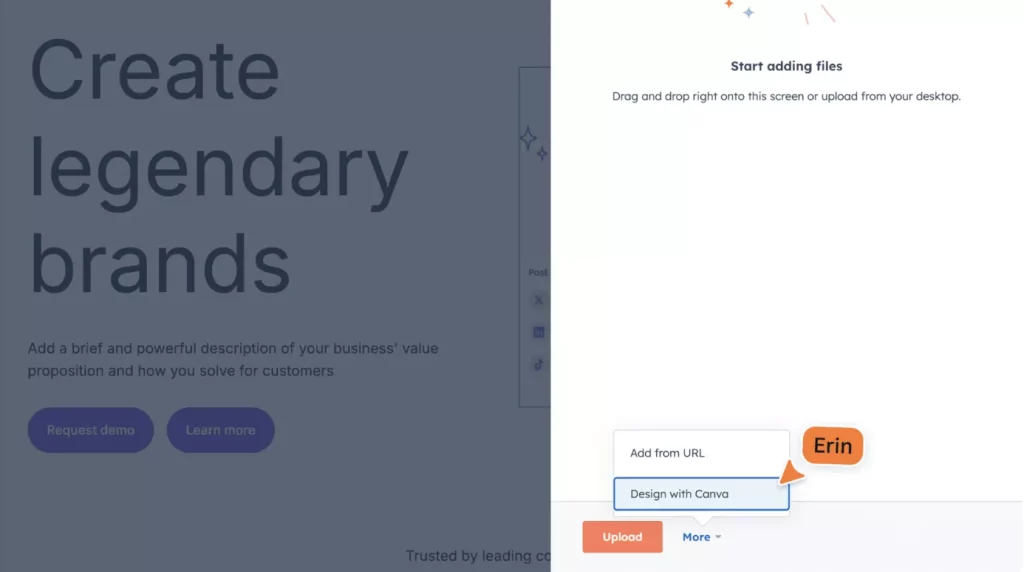
The new “Design with Canva” button inside HubSpot’s Content Hub gives you:
- Instant access to Canva templates for emails, social media, landing pages and more
- Real-time editing without leaving your HubSpot portal
- AI-powered tools from Canva’s Magic Studio for faster creativity
- Built-in commenting and collaboration features
- Direct publishing to HubSpot campaigns or assets
Why this matters for your marketing team
According to Canva’s latest Visual Economy Report, 89% of marketers believe visual communication holds more authority than other formats. Add to that HubSpot’s own data: brand marketing is moving to platforms like YouTube, TikTok, and Instagram—where visuals do the heavy lifting.
This integration helps you:
- Speed up workflows: No need to switch tools or chase design approvals
- Stay on brand: Pre-approved templates mean fewer design inconsistencies
- Scale production: One person can now manage multiple campaigns, visually and strategically
Our take:
This update is more than just a “quality of life” improvement—it reflects a deeper trend in Martech: platforms are becoming more connected, and marketers are becoming more autonomous.
With Canva and HubSpot working together, there’s less friction between strategy and execution. And when that gap shrinks, so does your time to market.
The result? Better design, faster delivery, and more cohesive campaigns—with fewer bottlenecks in between.
Social media updates
1. Best posting times in 2025: are you scheduling content when it counts?
Key highlights:
- Study analysed data from 30,000 businesses and creators
- Each social platform has its own engagement sweet spot
- Findings are based on when users actually interact with posts
- Ideal posting windows vary significantly by platform
📌 Have you been posting without a clear strategy? These fresh benchmarks could save you from wasting high-quality content at the wrong hour.
Sprout Social’s latest study is out, revealing the best times to post across social platforms based on real engagement data from over 30,000 brands and creators. While it’s true that “the best time to post” depends on your audience and industry, data-backed benchmarks can provide a helpful starting point to refine your strategy.
If you’ve been wondering why your midday Instagram post isn’t gaining traction or why your TikTok video performs best at night, this might help you spot hidden patterns and avoid guesswork.
Let’s break it down by platform:
Facebook: 9am to 12pm, any weekday
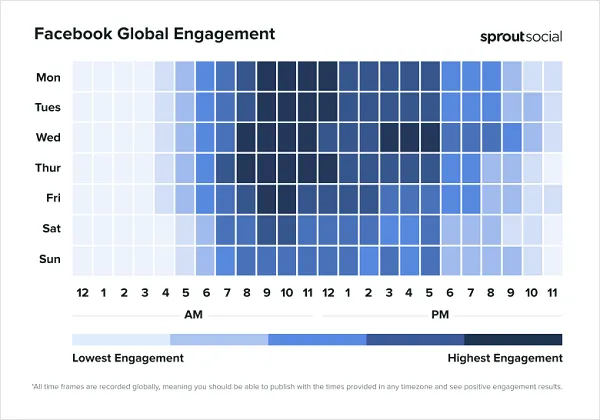
Peak days: Monday through Friday
This slot reflects commuter habits or early-day check-ins. People are catching up with birthdays, family updates, or headlines before their day begins.
Tip: Test short-form content or news-style updates during this window — the kind of material someone might consume quickly.
Instagram: 10am to 3pm, Monday to Thursday
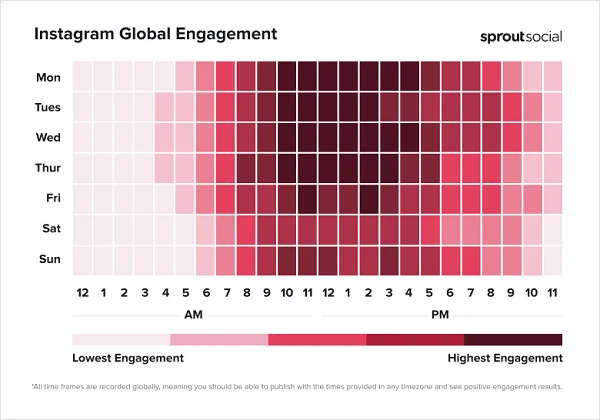
The mid-morning to early-afternoon window is where engagement peaks. Users might be taking a scroll break or checking in between meetings.
Tip: Focus on visually impactful content that captures attention quickly. Your design and caption need to do more work than usual here.
LinkedIn: 10am to 1pm, Tuesday to Thursday
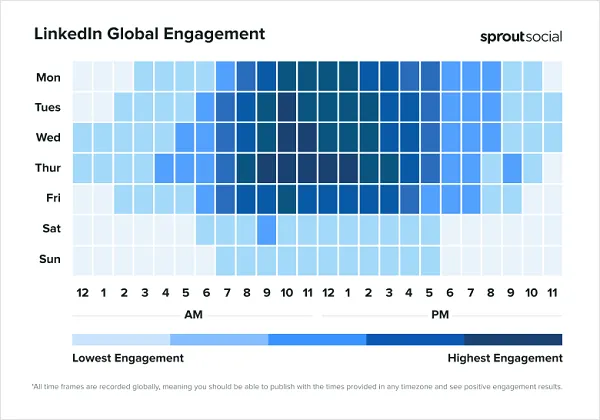
Business-minded users are most active during the middle of the workweek. This is prime time for company updates, industry news, and thought leadership content.
Tip: Avoid early mornings or end-of-day posts. Aim for the hours where users are focused, but not yet deep in meetings.
Pinterest: 1pm to 2pm daily
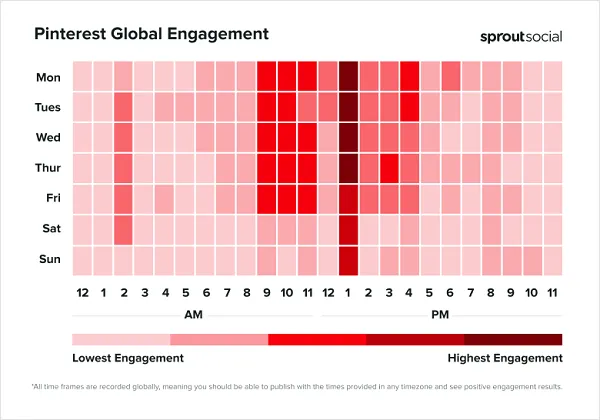
This one might surprise you — a consistent lunch-hour engagement window. It makes sense when you consider that Pinterest is often used for inspiration and casual browsing.
Tip: Schedule content that aligns with daily routines: recipes, fashion, home décor, or productivity hacks.
TikTok: Wednesdays, 2pm to 5pm — and after 5pm
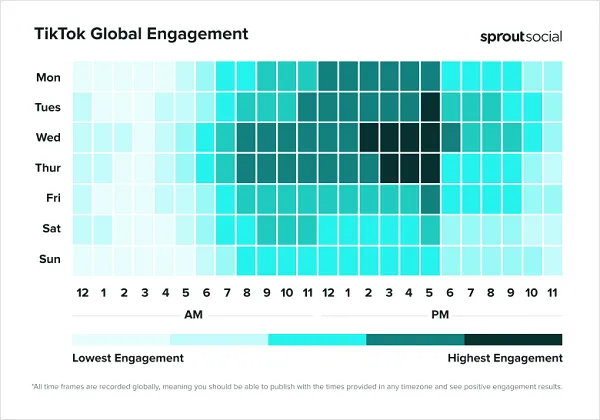
Engagement on TikTok spikes mid-week and continues to rise in the evening. This is when users have more time for passive content consumption.
Tip: Try “behind-the-scenes,” entertaining or educational clips that feel easy to consume and fun to share.
X (formerly Twitter): Tuesday to Thursday, 9am to 2pm
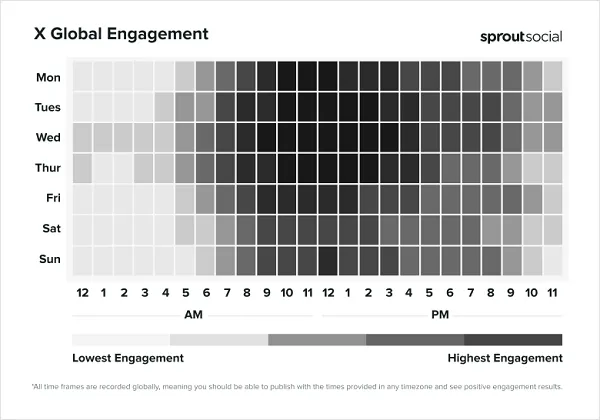
Users are active during working hours, catching news, trending topics, and quick takes.
Tip: Post news commentary, real-time updates, or questions to spark conversation when attention is high.
Our take:
Posting time is not a magic switch — your content still needs to be relevant and well-crafted. But if you’ve ever felt like you’re shouting into the void, these time windows could be a signal.
We see this as a smart moment to re-evaluate your content calendar. Are you aligning your best pieces with your audience’s most active hours? If not, you might be leaving engagement on the table.
Start small: take your top-performing posts from the past quarter and test them again at these suggested times. The results might surprise you.
2. Grok AI expands to Telegram: X bets big on off-platform reach

Key highlights:
- Grok, X’s AI chatbot, is now available on Telegram Premium
- Integration requires both X Premium and Telegram Premium subscriptions
- Reflects X’s effort to turn Grok into a monetised product
- Raises questions about audience targeting and platform alignment
📌 What does it mean when an AI chatbot built for one platform expands into another? Could we be seeing the start of cross-platform AI-driven user experiences?
In a strategic move to broaden Grok’s usage, X has partnered with Telegram, allowing users subscribed to both X Premium and Telegram Premium to chat with Grok directly within Telegram.
This signals a new phase in X’s plan to turn Grok into a more widely used (and profitable) AI tool — not just a feature exclusive to Elon Musk’s platform.
While Grok has been available within X for months, its usage numbers remain somewhat low. But this Telegram integration marks the first time Grok steps outside the X ecosystem, offering real-time responses in a new environment and potentially reaching a different segment of users.
Why Telegram? The app has grown in popularity among audiences seeking privacy and less moderation, especially in political circles. Given the overlap with parts of X’s core user base, the partnership makes sense from a strategic expansion standpoint — though it does raise questions about audience intent and how these tools will be used.
Our take:
Let’s be honest: this isn’t just a technical update — it’s part of a larger strategy.
Elon Musk’s goal appears to be building a multi-platform AI assistant that can move with users across apps. Whether or not you subscribe to Grok’s positioning as a “non-woke” alternative to ChatGPT, this shows that X sees AI as a critical growth lever.
For marketers, it’s not about Grok specifically, but about where AI chat interfaces are headed. The fact that chatbots are now extending to messaging platforms means we might soon be dealing with cross-platform AI interactions. Think: customer service chatbots that follow users from Instagram to Telegram to X, offering seamless support or sales prompts.
Are you preparing your brand for a world where users expect AI-driven answers — wherever they are?
About Frizbit
1. Frizbit at MWC Barcelona 2025

The Frizbit Barcelona team attended #MWC25, and it was an inspiring few days packed with cutting-edge innovation, AI-powered solutions, and conversations shaping the future of tech.
AI took centre stage — from predictive engines to robotics — but what stood out most was how brands are using technology to deliver more human, emotionally intelligent experiences.
For us at Frizbit, it reinforced what we’ve believed all along: automation should enhance the customer journey, not replace it.
That’s exactly what we’re working towards, helping eCommerce businesses and airlines alike recover lost bookings while increasing sales and engagement with personalisation at scale (and without third-party cookies)
We’ve shared our takeaways and reflections in our latest blog about our takes from MWC 25′.
Don’t miss Frizbit’s monthly blogs and explore our latest Digital Marketing Updates and News!
